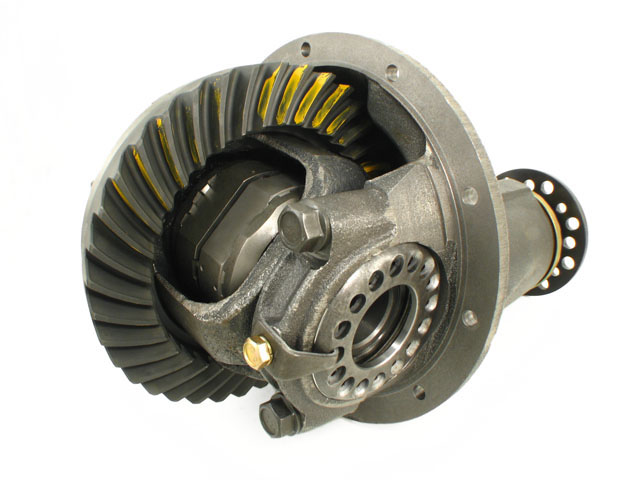Differential Break-In and Care Information
New Gear Break-In Procedure
All new gear sets require a break-in period to prevent damage from overheating. Any overloading or over-heating will cause the gear oil to break down and cause undue stress to the ring & pinion gears. Please follow these guidelines to insure proper break-in:
- After light use for the first 15-20 miles, stop and let the differential cool before proceeding any further.
- Repeat this process two or three times.
- The gears run hotter than normal during the break-in process and require two or three heat-cycles to ensure proper performance and life expectancy.
- Avoid heavy acceleration and don’t do any towing during the first 500 miles.
- If you plan to do any towing following the initial 500 miles, then tow for a short distance (about 15 miles) and then stop to let the differential cool for 10-15 mins. Then resume your trip as planned.
- If you’ve already put in over 1,000 miles on the new differential, then the diff is already broken in. Feel free to tow as normal.
- We highly recommend changing the oil after the first 500 miles. This will remove any metal particles or phosphorus coating that has come from the new gear set and bearings.
This may seem unnecessary but it is very easy to damage the differential by loading it before the gear set is completely broken in. The greatest damage results when a new ring & pinion has been run very hot before the gears are fully broken-in.
Any heavy use or overloading during the first 500 miles will cause irreparable damage to the gear set that can be determined by inspection of the gear set and will void the warranty.
Recommended Gear Oil
Name Brand 80w-90 GL5 or better.
Tip: If you are going to use Synthetic oil you may want to start with inexpensive oil for the first 500 miles and then change to synthetic. The reason for this is that debris will be created from the break-in process which will contaminate the gear oil. Using inexpensive oil first ensures that any excess metal generated during break-in will be flushed out and you can maximize the mileage of your more expensive synthetic oil in a cleaner environment.
Gear Noise
Aftermarket gears are primarily designed for strength and therefore are produced with specialized high strength alloys with less consideration to how quiet they will run. While this is more of a concern with well-insulated passenger cars, in our experience the increase of noise generated by oversized off-road tires more than overcomes any new noise from the differentials. In other words most of our customers will not be able to tell a difference, but due to their high strength you should expect them to run more noisy than stock gears.
Locker Noise and Info
Mechanical Locking differentials will bang and clunk during normal operation. This is caused by multiple factors including the mechanism used to engage and disengage, load on each axle shaft, and amount of throttle being applied. Whenever possible always come to a complete stop before engaging or disengaging a selectable locker, such as a Zip Air Locker, ARB Air Locker, or Toyota Electric Locker.
Keep in mind that both rear tires must measure the same height from the ground to the top of the tire in order for a locking differential to function properly. If your tires are not the same size, then you will experience accelerated tire wear and also higher heat from the differential and locker resulting in a reduced life expectancy of all components. So long as you are using tires that are approximately the same size you should be okay.
Regarding your tires, if you have an automatic locker such as a Grizzly or a Spartan locker, you should expect to have accelerated tire wear due to the locker engaging during normal daily-driving activity such as cornering. Factors that affect tire wear include how much throttle you apply, how much cornering is done, how much traction is available at the road surface, and how even the road surface is. Never apply heavy throttle while cornering because it will cause the locker to automatically engage which may cause your vehicle to oversteer.
The bottom line here is this: Take care of your locker and your truck and they will take care of you!
Special Note for Rear Axle High Pinion Installations
We will not warranty a High Pinion differential if used in the rear axle. The purpose of the reverse rotation of the High Pinion is to maximize strength when used in the front axle, but the opposite is true in that this results in maximum weakness when used in the rear axle. While it is nice to get your rear drive line up and out of the rocks, because the High Pinion was never intended for use in the rear axle, use it there at your own risk. Not even the gear manufacture will warranty this. Thank you for your understanding and Happy Crawling!

